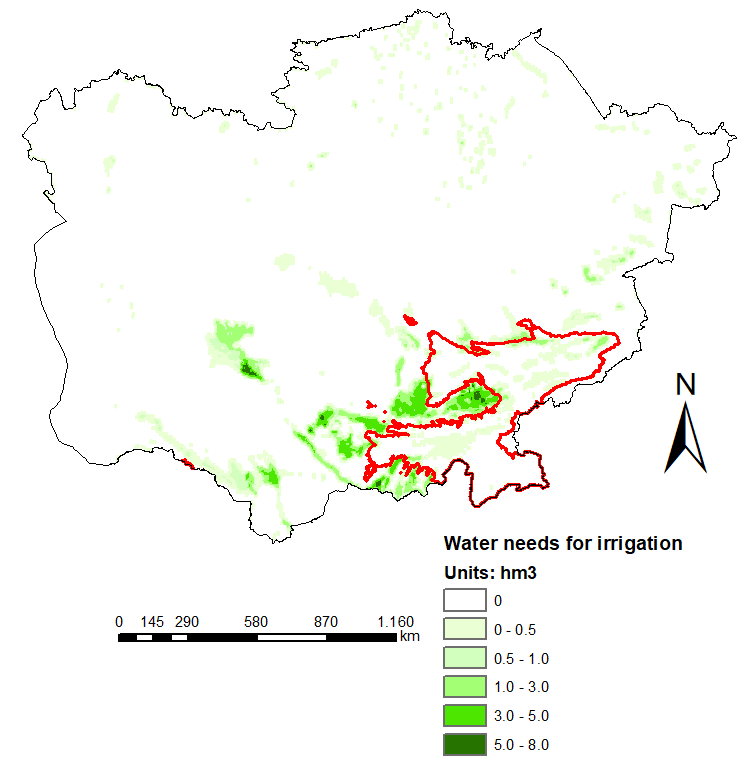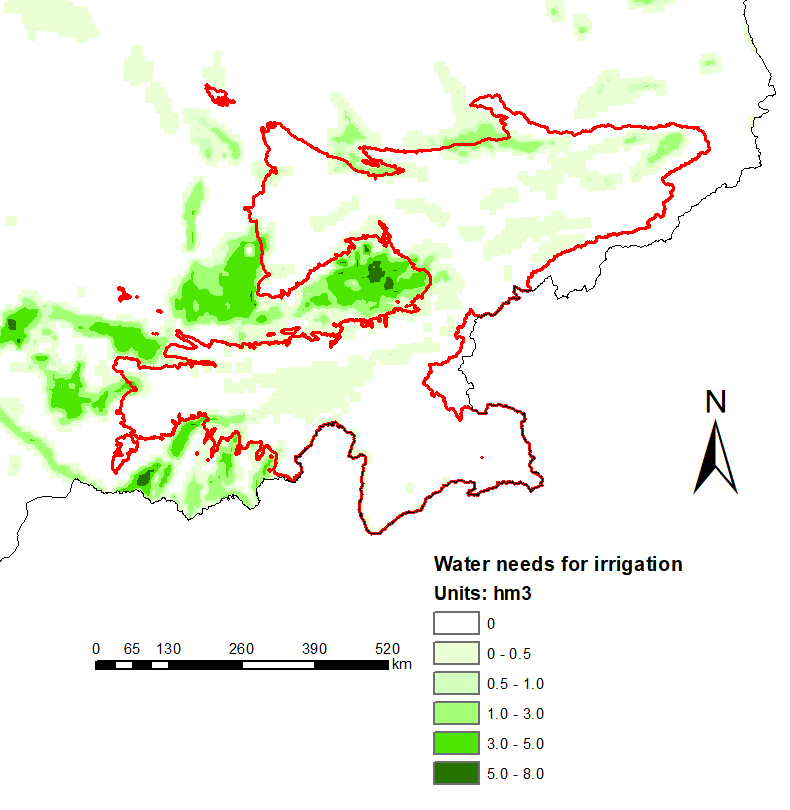Towards including transboundary Water-Food-Energy-Climate Nexus considerations in the decision making for new Small Hydro Power projects in Central Asia
July 21, 2023
In Central Asia, allocation conflicts between large-scale hydropower (HP) in the upstream countries and irrigation in the downstream occur regularly and mostly across complex international borders, especially during water scarce years and low storage conditions. With an increasing attention on the Sustainable small-scale hydropower production, the Water – Food – Energy– Climate (WFEC) Nexus is now under renewed focus in the Region.
In line with these developments, CARTIF has conducted a geo-localized analysis of the agriculture water withdrawal in the Region. This water consumption is a crucial element of the WFEC Nexus studies as it directly impacts into the downstream water availability affecting HP potential.
While crop production data at the national level are reported by the Food and Agriculture Organization of United Nations (FAO), similar data within sub-national boundaries or river basin scale are rarely available, and not from one institution. In the absence of official statistical data at the basin level, CARTIF’s GIS assessment has been based on the Spatial Production Allocation Model (MapSPAM) [1]. MapSPAM provides open access data on 42 different crop types and its management practices at 10 km of spatial resolution on an annual basis from 2000, 2005 and 2010. Each pixel in the region is associated to a harvested irrigated area and a specific crop yield. The latter can be transformed into agricultural water withdrawal rates by means of the water requirements for each crop type, identified in relevant publications [2-5]. Following this methodology, it has been possible to compute the agricultural water consumption in Central Asia and in the zone of runoff formation (ZRF), an area located in the mountainous territories and which concentrates the higher HP potential in Central Asia [6], as it is shown in Figure 1.
Figure 1. Water consumption calculated for irrigated crops, Central Asia (picture 1) and close up of the zone of runoff formation area (picture 2).
These geo-located results of the water demand by irrigation could be used to reduce the circulating flow at points with small HP potential located downstream of the cultivated area. In this way, WFEC Nexus variables could be included in the HP potential estimation, ensuring that an adequate management is guaranteed between water uses.
Within Hydro4U, project partner CARTIF is leading the replication activities of sustainable small-hydropower potential, which includes the development of the Hydro4U replication guideline tool. They contribute to the determination of the sustainable hydropower potential based on GIS data and impacts modelling at river basin scale. This also helps to quantify the shared benefits and trade-off analyses in the context of the Water-Food-Energy-Climate nexus. Project outputs also support the development of a screening tool to analyse site-specific hydropower conditions in Central Asia.
Authors: Iván Ramos & Raquel López, CARTIF
Picture credits: CARTIF Technology Centre, 2023
Sources:
[1] https://www.mapspam.info/data/
[2] Food and Agriculture Organization of the United Nations (FAO) AQUASTAT Crop Water Information [Dataset] Available online: https://www.fao.org/land-water/databases-and-software/crop-information (accessed on 20 May 2023).
[3 ] Oweis, T.; Hachum, A.; Pala, M. Lentil Production under Supplemental Irrigation in a Mediterranean Environment. Agric. Water Manag. 2004, 68, 251–265, doi:10.1016/j.agwat.2004.03.013.
[4] Mohamoud, M.; Abdalla, A.; Elhag, M.; Yousif, L. Estimation of Water Requirement and Water Productivity of Sesame Crop (Sesamum Indicum L.) in Dryland Areas of Sennar State, Sudan. 2019, 1–16.
[5] Torres, R.R.; Robaina, A.D.; Peiter, M.X.; Ben, L.H.B.; Mezzomo, W.; Kirchner, J.H.; Rosso, R.B.; Pimenta, B.D.; Pereira, A.C.; Loregian, M.V. Water Productivity and Production Function in Irrigated Millet Crop. Semin. Ciências Agrárias 2019, 40, 2837, doi:10.5433/1679-0359.2019v40n6Supl2p2837.
[6] De Keyser, J., Hayes, D. S., Seliger, C., Siegfried, T., López, R., Ramos, I. & Habersack, H. (2023). Hydro4U – Deliverable 1.4 First technical report.
Partner Description: Link to the respective partner description on the Hydro4U website (by SEZ)
Website: www.cartif.es
Twitter: @CARTIFCT
LinkedIn: CARTIF
Facebook: CARTIF


